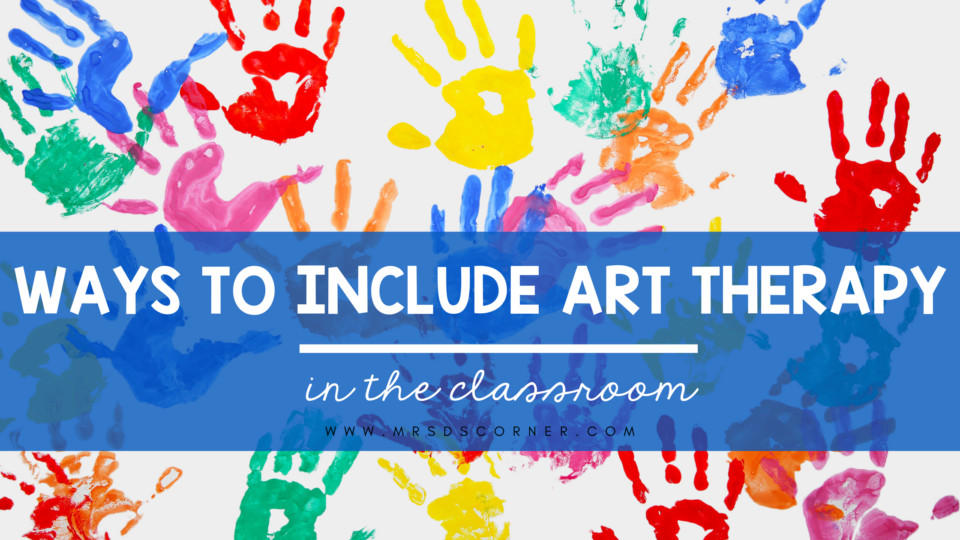As special ed teachers, we understand the importance of finding unique and effective ways to support students with special needs as they learn and develop.
One such approach is art therapy, which has been proven to offer numerous benefits for students with a wide range of abilities and challenges.


The Importance and Benefits of Art Therapy for Students with Special Needs
Art therapy combines creativity, psychology, and counseling techniques as students create art. It allows them to express themselves through various art forms, such as drawing, painting, sculpture, and collage. For students with special needs, art therapy can provide a safe and supportive environment that encourages growth, self-expression, and emotional regulation.
Some benefits of incorporating art therapy in special education classrooms include the following:
- Improved communication and self-expression: Art therapy provides an alternative means of communication for students who may struggle with verbal expression.
- Improved motor skills: Engaging in art activities helps develop fine motor skills and hand-eye coordination.
- Emotional regulation: Creating art can help students process complex emotions and develop coping strategies to manage their feelings.
- Increased self-esteem: Completing art projects can instill a sense of accomplishment and pride in students, boosting their self-confidence.
- Strengthened social skills: Collaborative art projects can promote teamwork, cooperation, and empathy among students.
Implementing Art Therapy
But how do you actually implement art therapy in the classroom? The five unique and creative art therapy ideas below are ones that you can implement in your special education classroom with relative ease and much success.
Emotion Masks
Objective: To help students identify, express, and regulate their emotions.
Instructions:
- Provide each student with a blank mask (either a paper or plastic one) and various art materials, such as markers, paint, crayons, and collage materials.
- Ask students to think about a specific emotion they have experienced and to represent that emotion on their mask.
- Allow students to share their masks with the group, discussing the emotions they chose to depict and why.
How it helps: This activity promotes emotional awareness and self-expression, as students are encouraged to explore their feelings through the creative process.
Group Mural
Objective: To foster teamwork, collaboration, and social skills among students.
Instructions:
- Hang a large piece of butcher paper or canvas on a wall in your classroom.
- Provide students with various art materials, such as paint, markers, and collage items.
- Encourage students to work together to create a mural on the shared canvas, discussing their ideas and collaborating on the design.
- Display the finished mural in the classroom as a reminder of the group’s collective effort and creativity.
How it helps: This activity promotes social skills development by requiring students to communicate, collaborate, and problem-solve as a team.
Texture Exploration
Objective: To help students develop sensory awareness and fine motor skills.
Instructions:
- Gather various textured materials (e.g., sandpaper, bubble wrap, fabric) and art supplies, such as paint and paper.
- Have students explore the different textures by touching the materials and describing how they feel.
- Encourage students to create artwork using the textured materials, either by incorporating them into their projects or using them as tools for applying paint.
How it helps: This activity stimulates students’ sensory systems and encourages them to explore new tactile experiences while developing their fine motor skills.
Art Journaling
Objective: To promote self-reflection, emotional regulation, and communication skills.
Instructions:
- Provide each student with a blank journal and various art supplies, such as markers, colored pencils, and stickers.
- Encourage students to use their journals as a space to express their thoughts, feelings, and experiences through both writing and art.
- Allow students to share their journal entries with the group if they feel comfortable doing so.
How it helps: Art journaling offers a safe and creative outlet for students to process their emotions, practice self-reflection, and improve their communication skills.
Clay Sculptures
Objective: To develop fine motor skills, spatial awareness, and creative expression.
Instructions:
- Provide students with clay or playdough and various sculpting tools, such as plastic knives, rolling pins, and molds.
- Encourage students to create sculptures that represent something meaningful to them, such as a favorite animal, a personal symbol, or an abstract representation of their emotions.
- Allow students to share their sculptures with the group, discussing the inspiration behind their creations.
How it helps: Working with clay promotes fine motor skill development, spatial awareness, and creativity as students manipulate the material to bring their ideas to life.
Incorporating art therapy in classrooms can provide significant benefits for students with diverse needs and abilities. By implementing the ideas above, you will not only support your students’ academic and social development but also create a more inclusive and nurturing learning environment.

